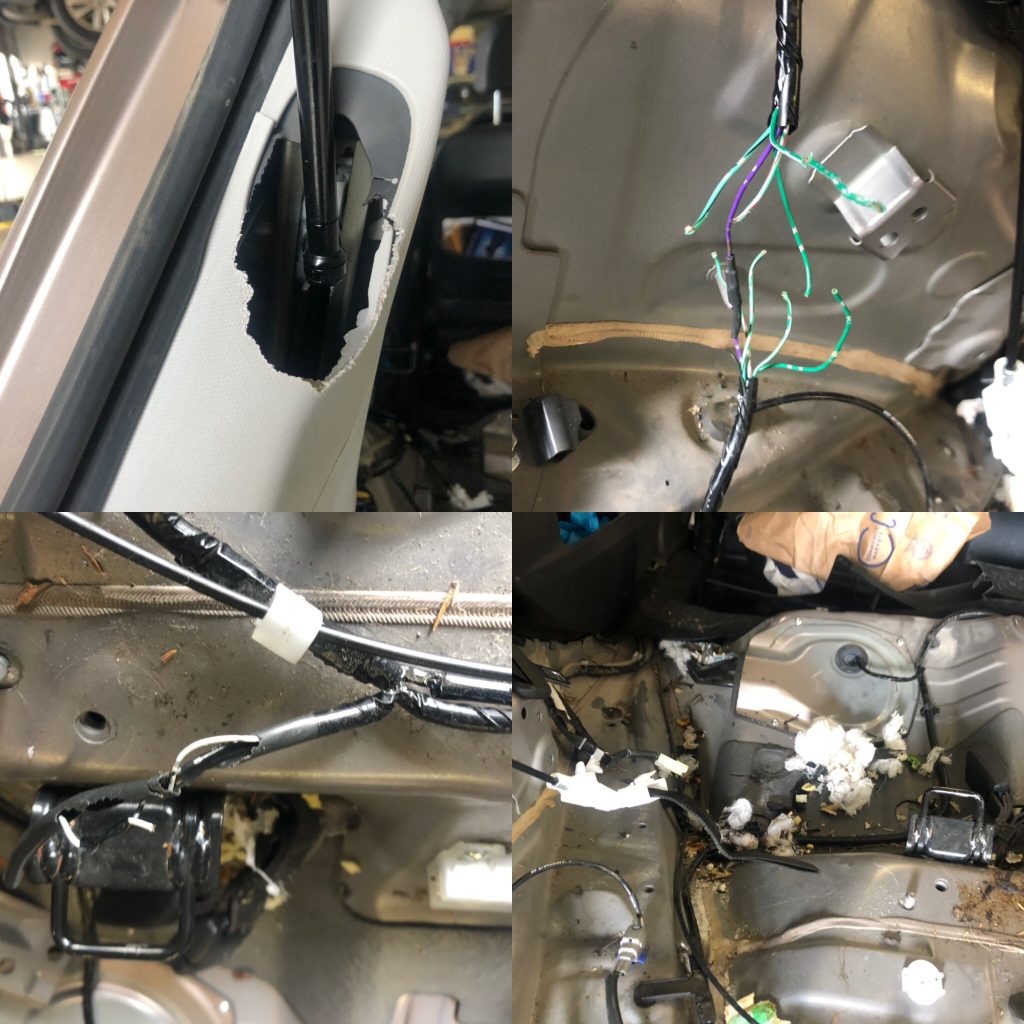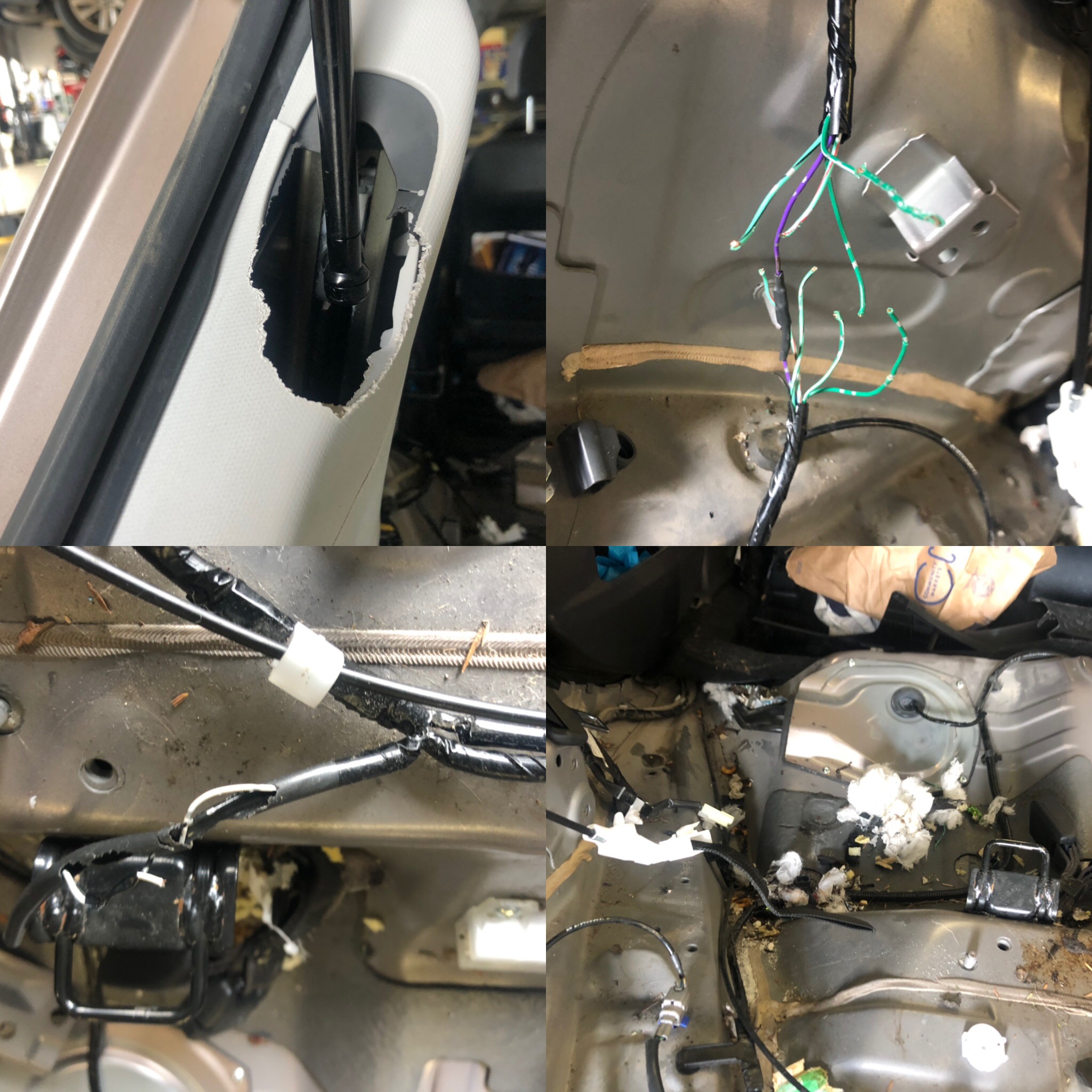As we exit Summer and enter Fall in the Puget sound area its very important to recognize this is the beginning of our rainy season in the Seattle area and I wanted to provide some tips on some of the things you should be on the look out for with your Subaru, and this starts with rodents.
If you are new to the area, you may not be aware just how bad of a problem we have in the NW with rodents, especially rats! Subaru (and most if not all Japanese car manufacturers) use soy oil to coat and treat many of the wiring harnesses in your Subaru. The soy oil is known to attract the little critters to your car, where they will build a nest on top of your Subaru’s engine and in many cases eat through wires causing damage, sometimes in the thousands of dollars. In other situations they will actually enter the car and sometimes take up home in the dash area and or heater assembly.
I have included a few pictures of the type of things we see year in and year out at the shop with Subaru’s and rodents.
 Subaru Rodent Damage picture
Subaru Rodent Damage picture
 Here is some firewall insulation that has been chewed to build a nest
Here is some firewall insulation that has been chewed to build a nest
 Subaru Rodent Damage Repair, here is where we used “Cayenne tape” to try and prevent another occurrence
Subaru Rodent Damage Repair, here is where we used “Cayenne tape” to try and prevent another occurrence
 A mouse used this space that was already covered with leaves to build a nest, if you look closely you can see fur.
A mouse used this space that was already covered with leaves to build a nest, if you look closely you can see fur.
What does the rain have to do with this? As the ground becomes saturated rodents look for higher, dryer and warmer ground, the horizontal engine found in your Subaru creates a very flat and sometimes warm area for a nest. Rodents almost always start building a nest on a warm engine. I can not tell you how many times we have had customers park there car at night and come out to a car with problems the next morning while trying to go to work.
Your probably right now asking your self what you can do to try and avoid this situation?
Depending on where you live there’s in some cases not going to be a 100% full proof kind of a way to never experience this, but you can for sure lesson the damage done if you look for signs and catch them early. Using your eyes and looking for rodent signs around home, or under the hood of your car is the best place to start. On a Subaru one of the most common places for a rodent to chew is the protecting cover over the positive battery lead to the alternator. They also really like any under hood insulation to use for nest building materiel. At the shop our techs are trained to look for and document any rodent activity and we will bring to your attention anything we see, but you can also look yourself if you are not local to us, or are not do for service anytime soon.
Here are some things to keep an eye out for around the home.
- First thing is if you park in the garage look closely the the garage door seals to see if they have been chewed, and make sure the door seals tightly to the concrete floor.
- If you have a pet and keep food in the garage make sure its in a sealed container this will lower the number of invites you send out to the neighborhood critters. I will add if your house is like ours and this involve kids in the feeding and care of your pets, make sure they are not spilling dog or cat found on the ground when feeding the four legged family members.
- If you live rural and or park outside, you need to step up your game to include some sort of repellent, this doesn’t have to be toxic and can be as simple as placing some dryer sheets under hood. I prefer Bounty and like to hold them in place with Velcro.
- If you park somewhere near a dumpster, know there will be rats around dumpsters and the same advice as to living rural applies to you as well.
If you have identified your Subaru has been targeted by Rodents there are other things that can be done, this includes more aggressive repellents, but also using steel wool, and screens in the air openings into the cabin are of your Subaru to keep the critters out. Using a light film of a mixture of cayenne pepper and cinnamon oil under hood is something we seem to have good success with after we have repaired a car that has been ratified. Now I am not suggesting you pop your hood and spray everything down with oil, you need to be aware of the arrears that’s should have treatment and the areas that should not or don’t need to be addressed.
So as the rainy season engulfs us and we spend the next few months literally under water in the Seattle area, be on the look out for critters in and around your Subaru and don’t ignore any signs you observe.
Thanks for Reading
-Justin Stobb
Helping you with your Subaru


Hi Justin,
I have a 2008 Subaru Outback 2.5i MT that I bought new in Aug 2007 and have so far driven only 43,000 miles.
I’m just up the road from you in Vancouver and my car has lived all its life in my condo’s underground parking lot, far from the freezing and thawing typical if it had been left outside.
That 43,000 miles includes a cross continent and back trip to Montreal I took in July. So the car has typically been averaging about 3,000 miles per year.
I love the car, and hope to keep it for another 10 years, but I clearly I don’t drive it very much. It’s never given me any trouble, but I’ve read the stories and I’m paranoid about the potential danger of a breaking timing belt.
It’s still got its original belt, and the mechanic I take it to — a specialty Subaru mechanic — says that even though the car is 12 years old, it still hasn’t been driven enough to warrant a change, and it lives in a relatively gentle climate.
Is he right? Should I continue puttering along at 3,000 miles per annum, or or should I insist on having the timing belt and other associated bits replaced during its next service?
cheers, Charlie
Hello Charles,
Really every aspect of maintenance should factor in time and mileage.
Its one thing to gamble on a alternator belt, but I just wouldn’t do that on the timing belt. We have seen cars with low miles but over 10 years old have a timing belt failure. I don’t want to see you fall into that at all. Its just such cheap insurance and your guy just isn’t thinking about t-belt stretch either.
Hope that helps
-Justin
I have a general Subaru question for you. I took great care of my Camry and was planning on keeping a lot longer then it’s 150,000 miles and recently got rear ended. Now I’m looking for a new car and considering a Subaru. Are the Crosstreks as great as the forester in longevity? Everything’s talks about legacy,outback and forester, I’m just wanting something not as large. I’m debating and figured you would know all. Please advise me.
Hello Pam,
I am writing this assuming you are looking at new Subaru’s.
The Crosstrek on the same platform as the Subaru Impreza, they tend to go through CV boots and some times wheel bearings a little sooner then the Impreza, but other than that they really have been a pretty good car. The Forester is now on it’s own platform but still shares many systems. I would encourage you to buy based on what you feel the most comfortable in.
Note I am writing this a little later than I like to respond and their have been a few new recalls on the Crosstrek in between you writing and me finally having a few moments to try and help out.
Hope this helps
-Justin